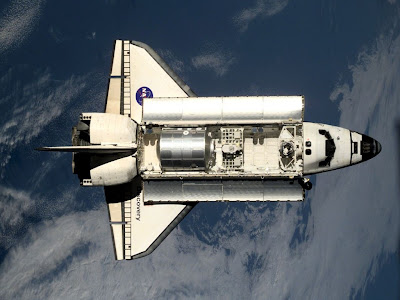
Discovery astronauts Steve Bowen and Alvin Drew are scheduled for a six-hour spacewalk outside the international space station Monday.
The team prepared by holding a 14-hour "campout" in the station's Quest airlock.
"The airlock's atmospheric pressure will be lowered to help purge nitrogen from Bowen and Drew's bloodstreams, protecting them from 'the bends' when they leave the airlock for the vacuum of space," a statement on NASA's website said.
They will install a power extension cable, move a failed ammonia pump and perform other operations outside the shuttle during the spacewalk.
Discovery started its 39th and final flight with a launch late Thursday afternoon from Kennedy Space Center in Florida.
Originally scheduled for November, the shuttle's launch had been delayed to make repairs to the external tank's support beams.
Astronauts spent Sunday moving items brought up on Discovery over to the space station.
On Tuesday, day six of the mission, astronauts will work to attach a permanent module -- known as Leonardo -- to the station. The module will be home for experiments in fluid physics, materials science, biology, biotechnology and other subjects.
The Discovery crew is headed by Steve Lindsey. Bowen, a late addition, became the first ever astronaut to fly consecutive missions after he was assigned to take the place of Tim Kopra when Kopra was injured last month in a bicycle accident, according to NASA.
Prior to Thursday's launch, Discovery had spent 352 days in orbit, circling the Earth 5,628 times. It has also carried 246 crew members, more than any space vehicle in history.
Read More
The team prepared by holding a 14-hour "campout" in the station's Quest airlock.
"The airlock's atmospheric pressure will be lowered to help purge nitrogen from Bowen and Drew's bloodstreams, protecting them from 'the bends' when they leave the airlock for the vacuum of space," a statement on NASA's website said.
They will install a power extension cable, move a failed ammonia pump and perform other operations outside the shuttle during the spacewalk.
Discovery started its 39th and final flight with a launch late Thursday afternoon from Kennedy Space Center in Florida.
Originally scheduled for November, the shuttle's launch had been delayed to make repairs to the external tank's support beams.
Astronauts spent Sunday moving items brought up on Discovery over to the space station.
On Tuesday, day six of the mission, astronauts will work to attach a permanent module -- known as Leonardo -- to the station. The module will be home for experiments in fluid physics, materials science, biology, biotechnology and other subjects.
The Discovery crew is headed by Steve Lindsey. Bowen, a late addition, became the first ever astronaut to fly consecutive missions after he was assigned to take the place of Tim Kopra when Kopra was injured last month in a bicycle accident, according to NASA.
Prior to Thursday's launch, Discovery had spent 352 days in orbit, circling the Earth 5,628 times. It has also carried 246 crew members, more than any space vehicle in history.
Read More













